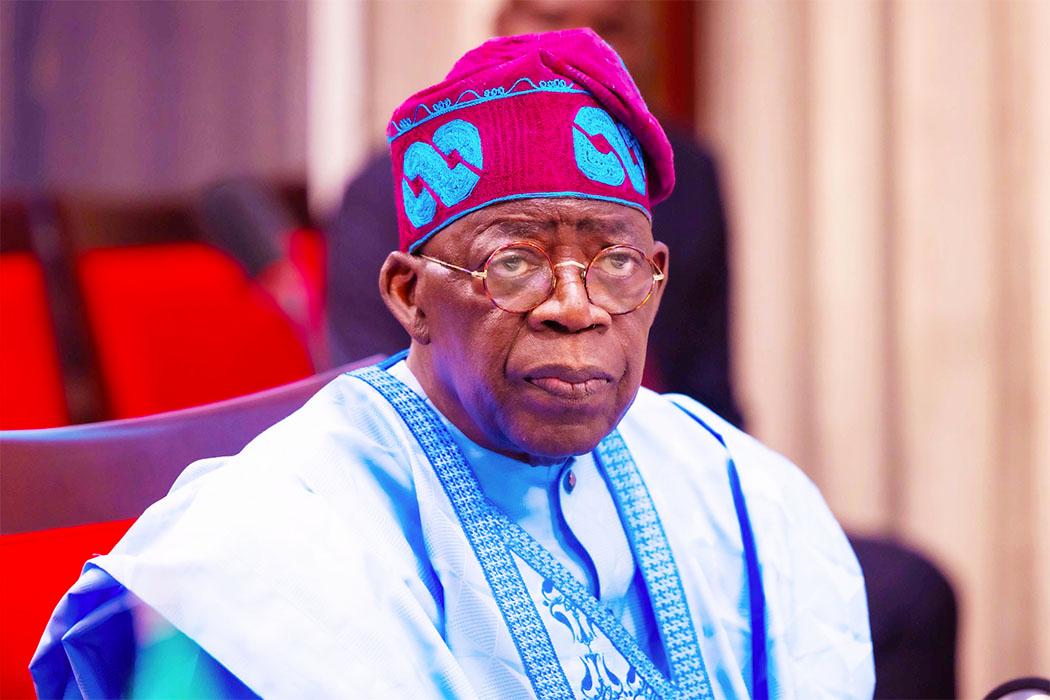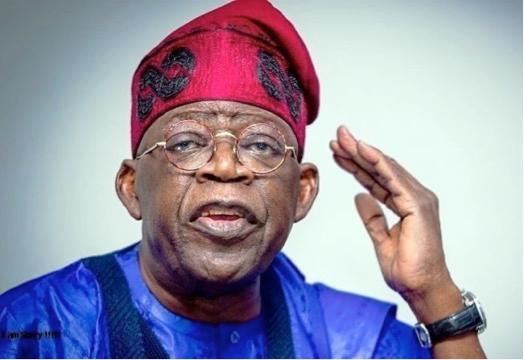The national economy sub-committee of Policy Advisory Council, set up by President Bola Ahmed Tinubu to prepare his administration’s blueprint on the economy, recently released its report. Dike Onwuamaeze writes on how the report will affect the industrial sector
President Ahmed Bola Tinubu’s first act on May 29 as Nigeria’s president received an instant applause from stakeholders in Nigerian economy in general and manufacturers in particular. The applause came from the president’s unambiguous declaration that he would do away with the petrol subsidy, multiple foreign exchange rates, multiple taxations and initiate fiscal reforms that would accelerate the growth of Nigeria’s gross domestic product (GDP). Days later, the fuel subsidy was dropped and the multiple exchange rates were collapsed by the Central Bank of Nigeria (CBN).
Few weeks later, these actions were followed with the release of the Policy Advisory Council Report (PACR) on the economy in mid-June by the National Economy Sub-committee of the PACR. The report, which was prepared on May 17, 2023, gave an outline of President Tinubu’s administration fiscal, monetary, industry and trade policies amongst others.
The council was established to support the delivery of sustainable and inclusive economic growth. It said that Nigeria has the potential to become a major player in the global economy by virtue its human and natural resources endowments. However, the country is faced with major challenges such as rising unemployment and underemployment; inadequate infrastructure and poor access to markets, in-country security challenges impacting on investments, low skill levels impacting labour productivity and low-capacity utilisation of the manufacturing sector due to the reduction of consumer demand which has resulted in the closure of some businesses and rise in the country’s level of unemployment.
The PARC stated that the outlook of the Nigerian economy, “remains fragile given Nigeria’s high population growth rate and declining GDP per capita,” adding that, “there is an urgent need to implement high-impact initiatives to grow the economy at a GDP average growth rate of 7.0 per cent per annum in order to achieve a $1 trillion GDP in next eight years.”
It highlighted the need to double the size of the Nigerian economy from $450 billion to $1trillion, deliver sustained inclusive growth, lift 100 million people out of poverty and create the enabling environment to generate over 50 million jobs.
The council also recommended the “passage of an Emergency Economic Reform Bill (EERB) to grant the President special powers to drive the economic reform agenda and declare a state of emergency in revenue generation and national security.”
Industry and Trade
Zeroing on the industry (manufacturing) and trade, the report stated that the goal is to grow the non-oil export contribution to GDP, relaunch the concessioning of Kano and Calabar Free Trade Zones (FTZ), and establish new export processing zones that would create capacity to generate exports amounting to at least 20 per cent of Nigeria’s total export revenues.
The report also highlighted the need to review and restructure existing incentives, waivers and tariffs to plug leakages and boost key sectors of the economy. It also envisaged the development and implementation of a comprehensive, transformational program to support export-quality assurance and “establish dedicated seaport and airport export terminals, with sufficient capacity to process/handle the target volume of exports and upgrade the access roads to export terminals.”
Others are to develop and implement backward integration programs for strategic sectors to enable import substitution and reduce exchange rate induced inflation that affects the economy; fast-track the revitalisation of the National Commodity Exchange (NCE) with regional trading centers, and facilitate investment in the entertainment industry in collaboration with the private sector, leveraging the $600 million loan facility administered by the Bank of Industry.
Grow Manufacturing Contribution to GDP
On how to increase the manufacturing sector’s contribution to the GDP, the PACR recommendation is to “provide incentives, including partnerships with strategic trading partners,” in a manner that would accelerate the growth of key sectors, such as light electronics assembly, garments, fertilizer, refined sugar, oil palm, automotive), and enable them to “ultimately generating target output in excess of $50 billion annually.”
It further recommended that the federal government should “domesticate at least 50 per cent (valued at $17 billion) of the value chains of the three largest manufacturing sub-sectors by contribution to GDP, i.e. food and beverages, chemicals and petrochemicals, textile, apparel and footwear.”
In addition, the government should enhance the purchasing power of Nigerians by removing N1 trillion out of N5 trillion in the Cash Reserve Fund with the CBN to launch “a consumer credit scheme for housing and consumer goods (such as automobile, furniture etc.) via the following options.” The N1 trillion would be set aside to promote long-term (20-30 year) mortgages and affordable consumer credit.
Other recommendations of the council on how to grow the manufacturing sector’s contribution to the GDP included subsidising “interest rate with a maximum of 5.0 per cent via tax incentives for commercial banks by granting tax exemptions on interest income earned from mortgages.
“Work closely with the cement industry/ building association to train a minimum of 100,000 artisans per annum.
“Digitise the land registry and create a one-stop shop to facilitate approval process for land registration in each state.
“Implement an Ease of Doing Business Program targeted at long-running high-impact pain points.
“Establish a special investment vehicle to enable investment in the manufacturing sector in collaboration with the private sector.
“Make power-for-industry a competitive advantage for manufacturing in Nigeria by reducing the cost of gas for industry to the cheapest amongst MINT economies.
“Expand the local manufacturing of pharmaceutical products and vaccines to meet at least 70 per cent of Nigeria’s demand within eight years.
“Establish a program in collaboration with the private sector for the local production of key industrial equipment that can substitute at least $2 billion of imported machinery and equipment.”
The policy document also planned to make Nigeria the leading investment destination of choice among the MINT’s economies by identifying “high priority FDI target nations, and ensure completion of bilateral investment agreements and conduct priority sector-themed investment roadshows led by Mr. President to attract quality investments from targeted countries.”
In addition, the government is advised to implement an investment promotion strategy aimed at securing funding from Multilateral Finance Institutions (MFIs) such as the European Investment Bank, the New Development Bank, the Islamic Development Bank, the International Finance Corporation, etc.
Other strategies include the expansion of the Nigeria Investment Promotion Council’s (NIPC) Single Window Investors’ Portal for easy accessibility of investible opportunities (to include e-OSIC, e-PSI, investment profiling, iGuide and other investment promotion platform); the strengthening of the provisions of the Intellectual Property Protection Act, especially for targeted investment opportunities and promote public awareness as well as driving “a fundamental reform of the regulatory environment to enable business and investment.
“Identify and target key regulators/agencies that have significant touch points across each of the strategic economic sectors for radical enterprise transformation and organisational repositioning, including the implementation of eGovernment initiatives.”
The regulators and agencies to be targeted for reform are Target agencies for reform: NNPCL, NERC, NCC, NITDA, CBN, SEC Federal Mortgage Bank, PENCOM, NEPZA, NAFDAC, Customs, FIRS, NPA, CAC.
Key Segment Issues and Root Cause Analysis
The report stated that some of the root causes of inefficiency and lack of competitiveness in the manufacturing and trade sectors include “economic sabotage by rogue actors, which causes damage to the country’s trade infrastructure, disrupts supply chains, and affects overall trade performance.
“Lack of competitiveness in the manufacturing sector due to high production costs, which affects the country’s ability to compete in the global markets.
“Low ease of doing business ranking, which hinders the growth of the trade sector and discourages foreign investment.
“Significant infrastructure challenges and high cost of energy impacting manufacturing cost.”
The compendium of refined action plan that was proposed in the PACR includes initiatives to boost manufacturing and trade and the transformation of Nigeria to become Africa’s most efficient trading nation.
Thereport urged the federal government to “implement the National Single Window Trading Platform Project to facilitate product valuation and classification, provide information, minimise human discretion and streamline the import and export processes.
“Prioritize the build-out of rail infrastructure along selected rail routes for agricultural and trade logistics
“Enter into preferential trade agreements with key countries to grow and improve market entry and cost of trade.
“Provide incentives to facilitate the establishment of warehouses via PPP arrangements for exports, imports and transit locations outside the ports.
“Decongest the area up to 4.0 kilometres around the ports and designate them for cargoes, roads and railway.
“Enforce the presidential directive on 48 hour clearance of goods at seaports in line with Executive Order 001.
“Redefine the performance measures of key agencies of government to emphasise trade facilitation.
“Set up a whistle blowing mechanism that enables and empowers transporters to report and escalate issues with the various authorities while transporting food and other critical items. Implement stringent sanctions on all reported cases.”
Other initiatives to boost industry (manufacturing) and trade also include the review and restructuring of existing incentives, waivers and tariffs to plug leakages and boost key sectors of the economy e.g. agriculture, manufacturing, entertainment and tourism etc., and the establishment “of an $8 billion export financing facility sized to support the targeted $40 billion worth of exports including a Made-in-Nigeria for export program.”
Others are the development and implementation of a comprehensive, transformational program to support export-quality assurance and the execution of country-specific strategies for accessing each of the top 10 target markets.
The government, according to the report, should establish dedicated seaport and airport export terminals, with sufficient capacity to process/handle the target volume of exports and upgrade the access roads to export terminals.
It should also reengineer the export procedures and documentation covering key parties – including CBN, NPA and customs with key performance indicators “and SLAs that are consistent with global standards of cost and time; along with sanctions for defaulting parties.”
Furthermore, the government is encouraged to “establish technology hubs in partnerships with multilateral institutions and private investors across the country’s six geopolitical zones.
The report charged the government to “develop and implement backward integration programs for strategic sectors to enable import substitution and reduce exchange rate induced inflation that affects the economy.
“Target major FX-consuming commodities /items such as raw sugar, oil palm, automotive, NPK fertilizer, light electronics, wheat and cassava starch.
“Establish national cold chain storage infrastructure across the six geopolitical zones in collaboration with the private sector.”




